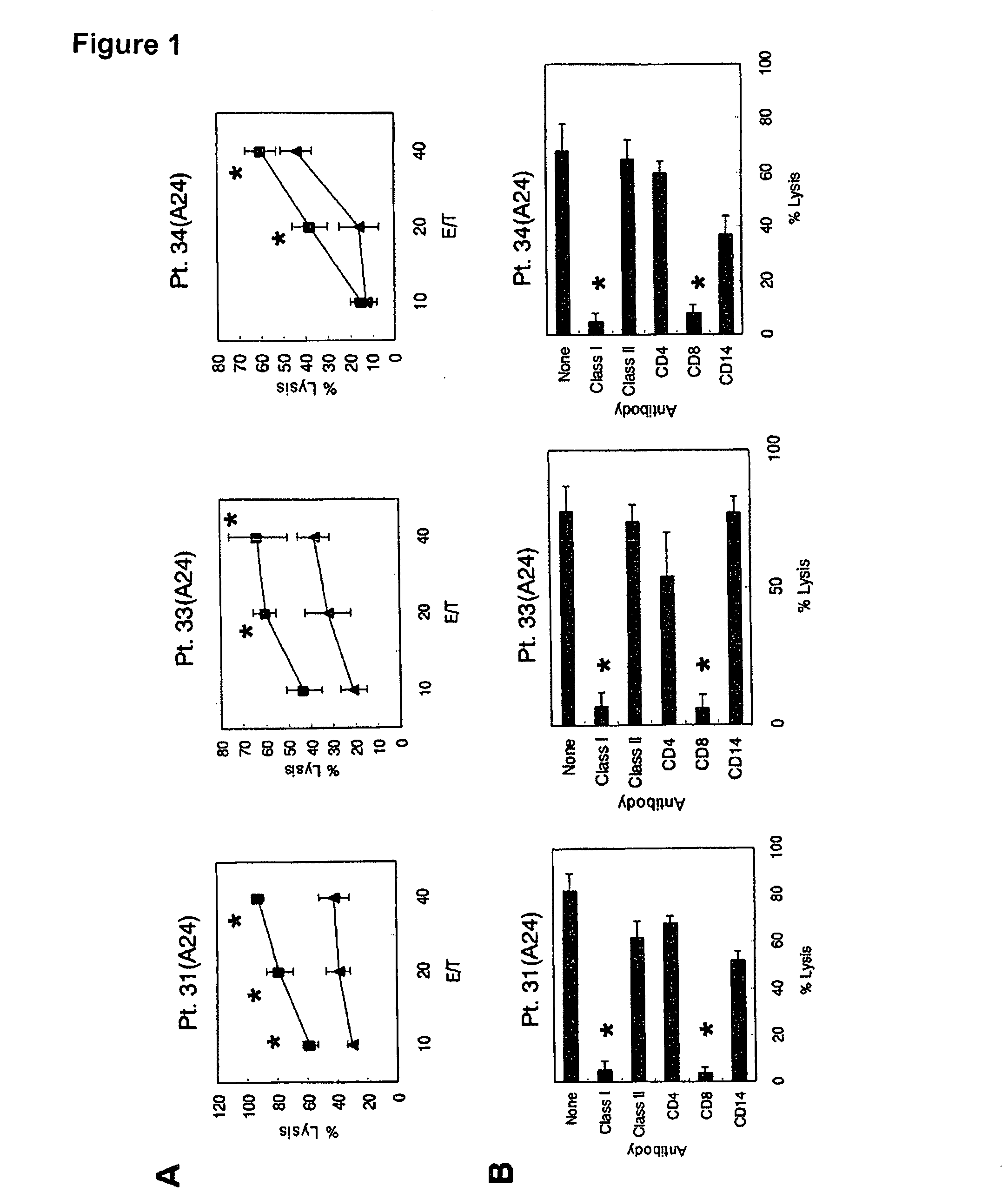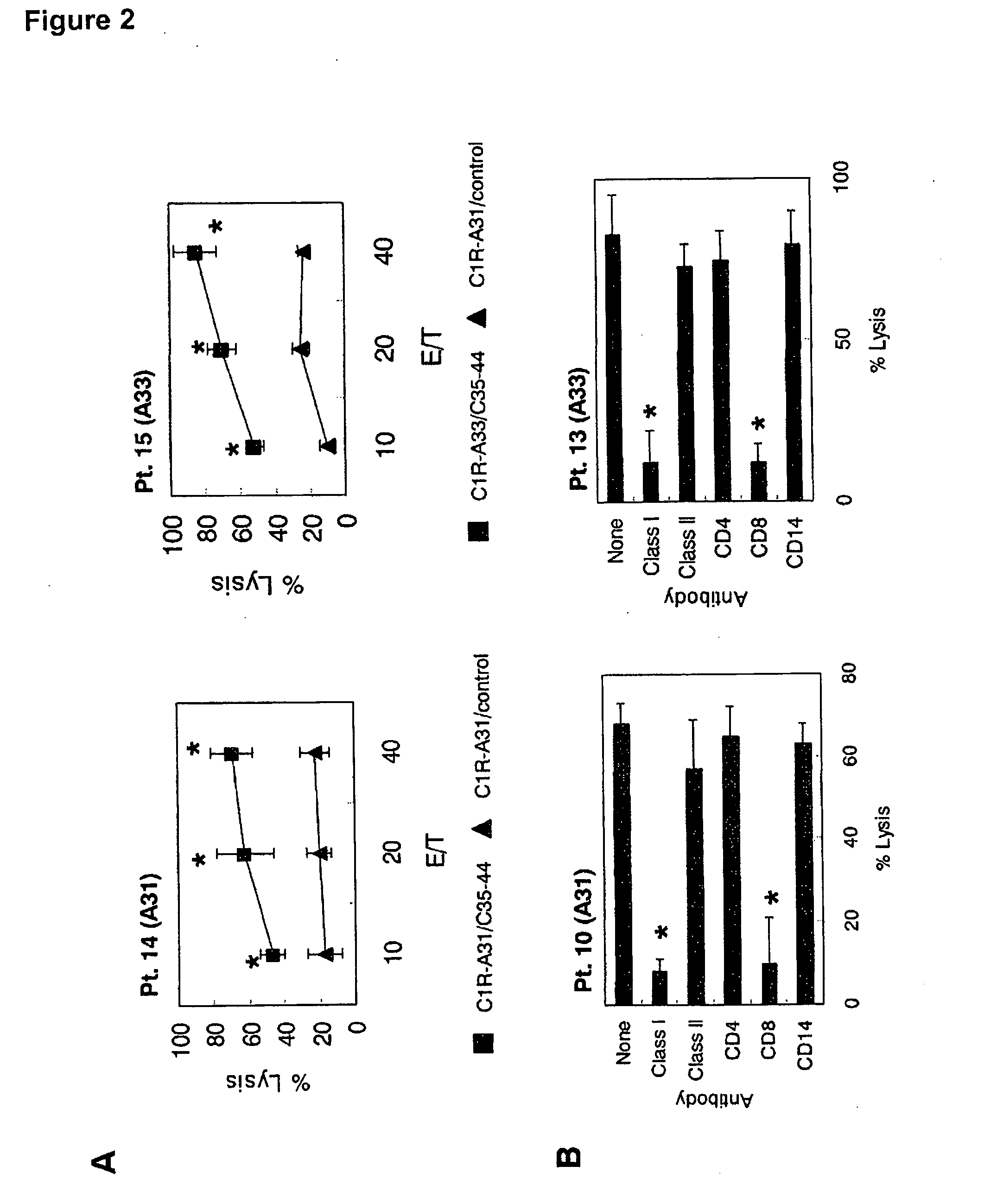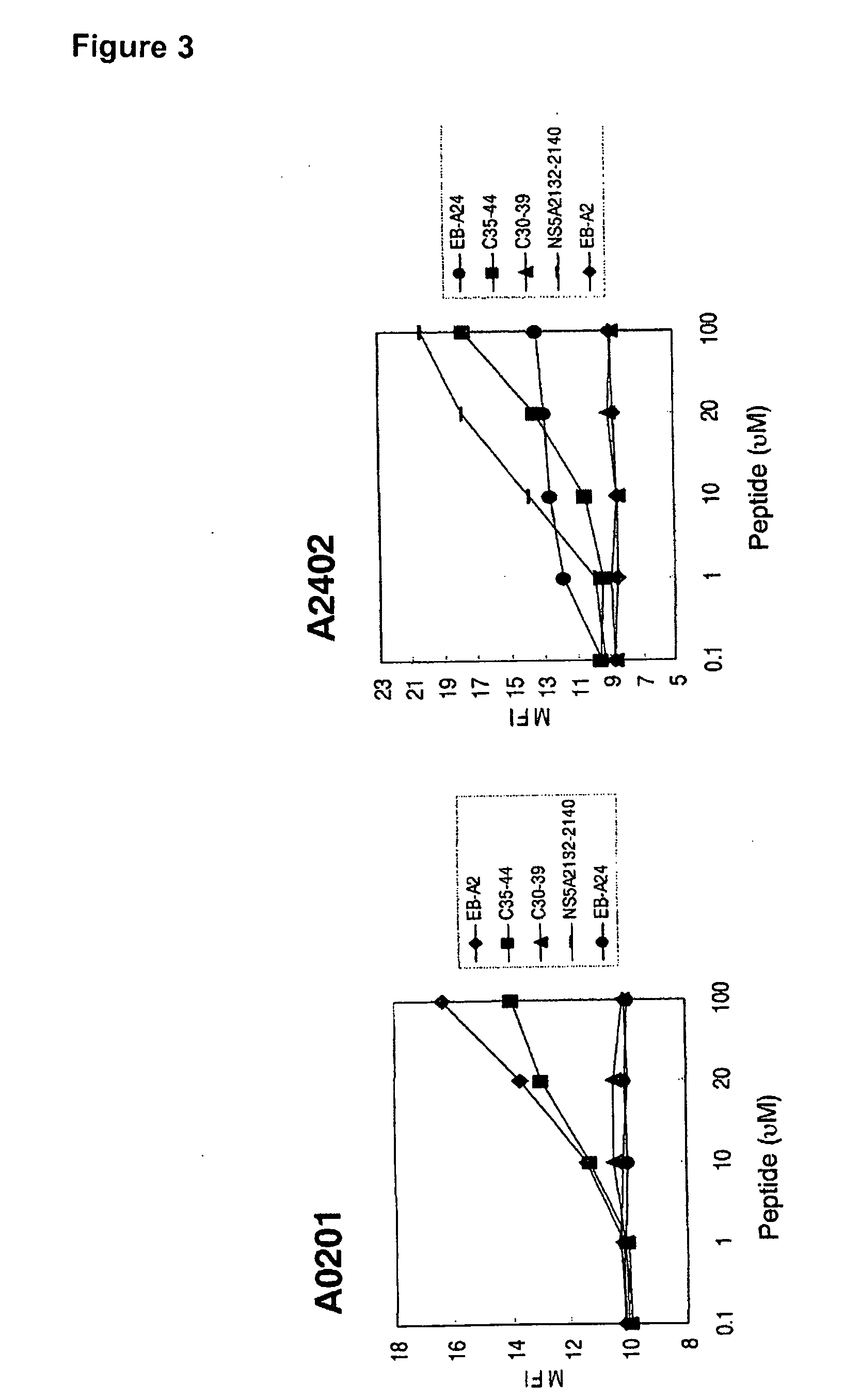Peptide Derived from Hepatitis C Virus
a technology of peptides and hepatitis c virus, which is applied in the field of treatment of a hepatitis c virusrelated disease, can solve the problems that antiviral therapy cannot be used in almost all of the developing countries where the majority of infected patients are infected, and achieve the effect of strong inducement of cytotoxic t lymphocytes (ctl) and low binding activity
- Summary
- Abstract
- Description
- Claims
- Application Information
AI Technical Summary
Benefits of technology
Problems solved by technology
Method used
Image
Examples
example 1
Peptide-Specific CTL Induction and Cytotoxic Activity of Peptide-Stimulated PBMC by Peptide C35-44 Subjects
[0033]The subjects of this assay were HCV-infected individuals with HLA-A24 or HLA-A3 supertype. It was verified that these subjects were not infected by the human immunodeficiency virus (HIV). To obtain the peripheral blood monocytes (PBMC), 20 mL of peripheral blood was collected and the PBMC were prepared by Ficoll-Conley centrifugation. All samples were stored at low temperature until used in the test. The study was approved by The Institutional Ethical Review Board of Kurume University School of Medicine, and informed written consent was obtained from the subjects before the start of the test. Expression of HLA-A11, HLA-A31 and HLA-A33 molecules in the PBMC of the HCV-infected subjects was measured by flow cytometry using the following antibodies: anti-HLA-A11 monoclonal antibody (mAb) (Cat# 0284HA; One Lambda Inc., Canoga, Calif.), anti-HLA-A31 mAb (Cat# 0273HA, One Lambd...
example 2
[0049]Binding Assay of Peptide C35-44 with HLA-A24, HLA-11, HLA-A31, and HLA-A33
[0050]The peptide C35-44 was assayed for its ability to bind to HLA-A24, HLA-A11, HLA-A31, and HLA-A33 by a direct contact assay using MHC molecules.
Cell Lines
[0051]The RMA cell line is a lymphoma cell line transformed with Rauscher virus derived from C57BL / 6 (H-2b), and RMA-S is a TAP-deficient natural mutation cell line (Ljunggren HG, and Karre K: J Exp Med, 162, 1745, 1985). RMA-S-A*2402 / Kb is a mouse lymphoma cell line wherein the -A*2402 / Kb chimeric gene encoding the a1 and a2 domains of the HLA-A*2402 gene, and the a3, transmembrane, and intracellular domains from the murine H-2 kb molecule, has been introduced into RMA-S cells (provided by Dr. Takasu (Research Institute of Dainippon Sumitomo Pharma Co., Ltd., Osaka, Japan)). On the other hand. RMA-S-A*0301, -A*1101, -A*3101, and -A*3303 cell lines were established by introducing the human HLA-A*0301, -A*1101, -A*3101, and -A*3303 genes, respective...
example 3
HLA-A11 Restricted CTL Induction from Peripheral Blood from Healthy Donors by peptide C35-44
[0057]The peptide C35-44 was tested for its ability to induce peptide-specific CTL in PBMC from healthy donors having HLA-A11. After the PBMC were incubated in vitro with the HCV-derived peptide or a control peptide, their reactivity toward C1R-A11 cells pulsed with the corresponding peptide was measured as indicated by IFN-y production.
[0058]Lymphocytes from six healthy donors (HD) [HLA-A11 / A11, A2 / A2, A24 / A24, A2 / A24, A11 / A2, and A11 / A24] were used for CTL induction. The peptide-specific CTL was measured according to a previously reported method with slight modifications (Hida N et al., Cancer Immunol Immunother 2002; 51: 219-28). Briefly, PBMC (1×105 cells / well) from HLA-A11 positive healthy donors were incubated together with 10 μL / mL of each peptide in 200 μL of liquid culture medium in a U-bottom 96-well microculture plate (Nunc, Roskilde, Denmark). The test was conducted in quadruplica...
PUM
| Property | Measurement | Unit |
|---|---|---|
| concentration | aaaaa | aaaaa |
| dissociation constants | aaaaa | aaaaa |
| antibody titer | aaaaa | aaaaa |
Abstract
Description
Claims
Application Information
 Login to View More
Login to View More - R&D
- Intellectual Property
- Life Sciences
- Materials
- Tech Scout
- Unparalleled Data Quality
- Higher Quality Content
- 60% Fewer Hallucinations
Browse by: Latest US Patents, China's latest patents, Technical Efficacy Thesaurus, Application Domain, Technology Topic, Popular Technical Reports.
© 2025 PatSnap. All rights reserved.Legal|Privacy policy|Modern Slavery Act Transparency Statement|Sitemap|About US| Contact US: help@patsnap.com



